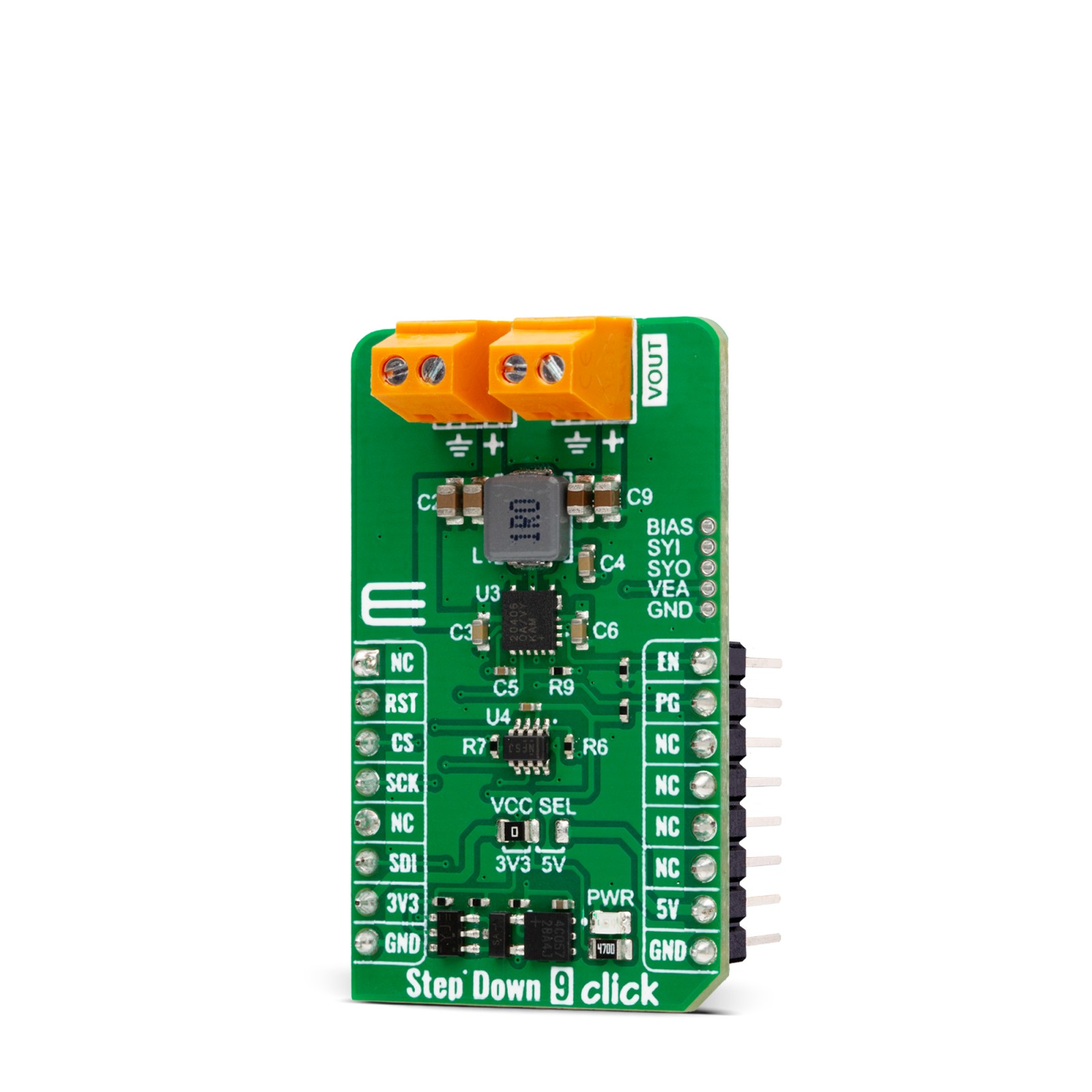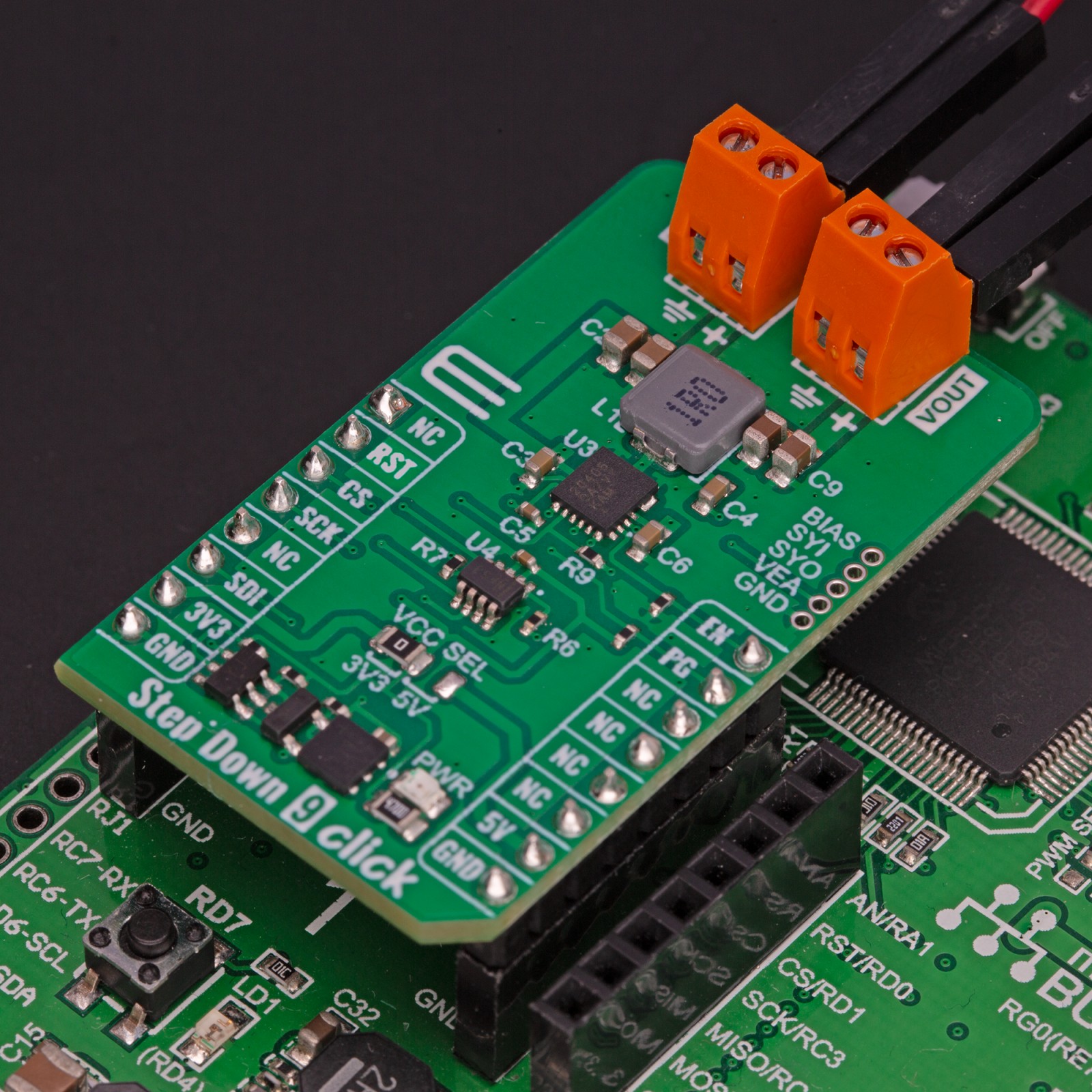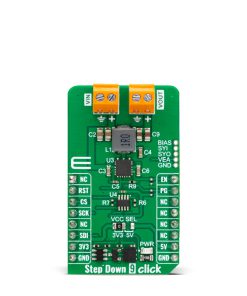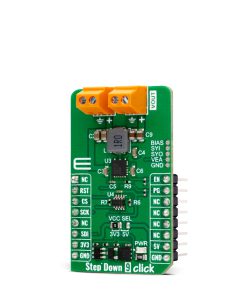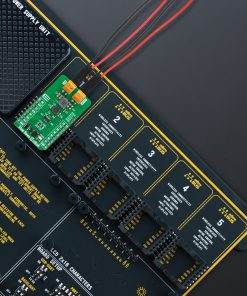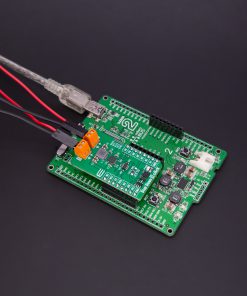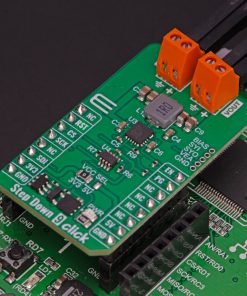Step Down 9 Click
R645.00 ex. VAT
Step Down 9 Click is a compact add-on board that converts higher voltages into a lower voltage level. This board features the MAX20406, an automotive fully integrated synchronous silent switcher buck converter from Analog Devices. It is designed to deliver up to 6A with wide input voltages ranging from 3V up to 36V. The output voltages are programmable in a range of 0.8V to 10V and are available over the VOUT terminal. This Click board™ makes the perfect solution for developing automotive infotainment systems, ADAS and other safety-critical components, industrial equipment, high-voltage DC-DC converters, and more.
Step Down 9 Click is fully compatible with the mikroBUS™ socket and can be used on any host system supporting the mikroBUS™ standard. It comes with the mikroSDK open-source libraries, offering unparalleled flexibility for evaluation and customization. What sets this Click board™ apart is the groundbreaking ClickID feature, enabling your host system to seamlessly and automatically detect and identify this add-on board.
Stock: Lead-time applicable.
| 5+ | R612.75 |
| 10+ | R580.50 |
| 15+ | R548.25 |
| 20+ | R527.61 |


